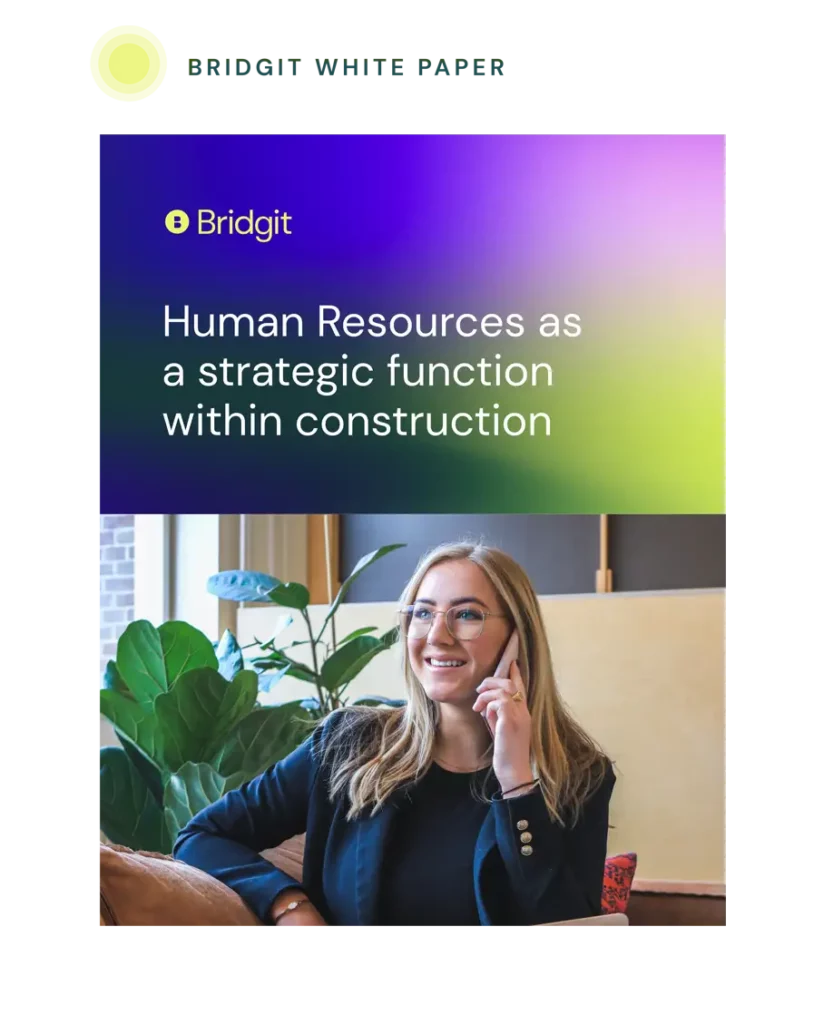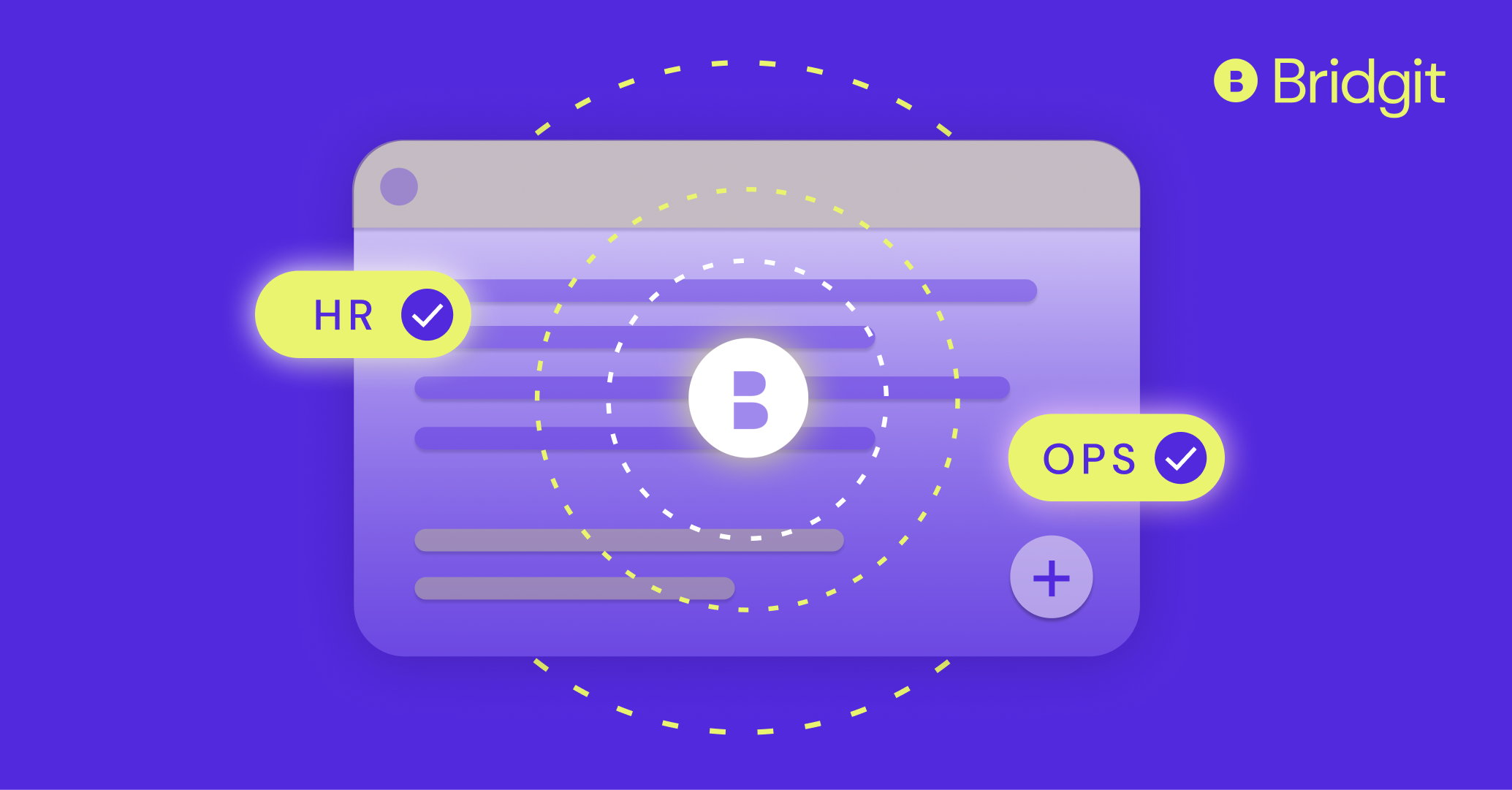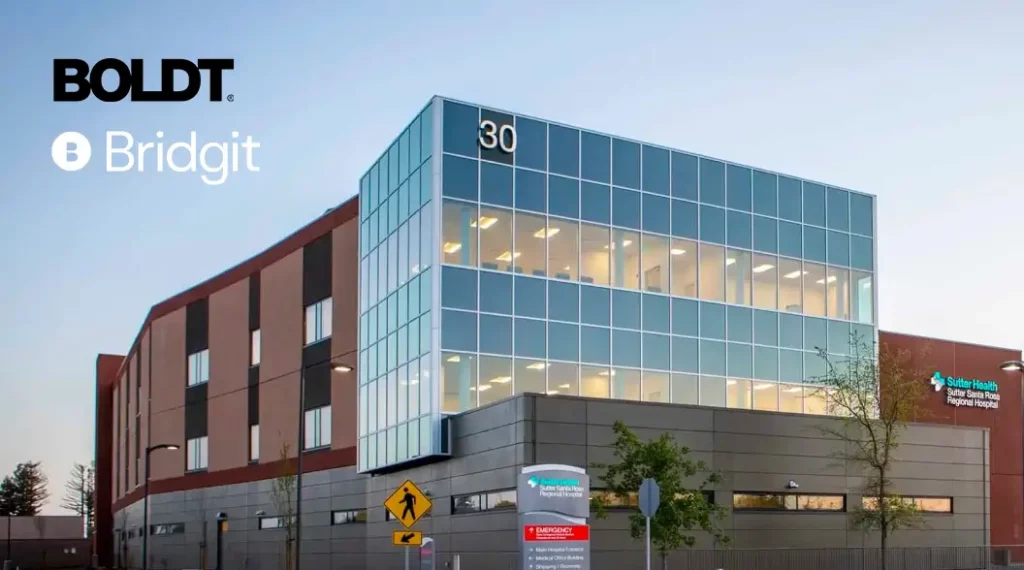Table of Contents
For a long time now, we’ve been advocating for the demolition of data silos, not only within your team but between functions. Two key functions that could benefit from collaborating and working off of specific data are Operations and HR.
When you hear “merging functions,” it’s easy to get defensive about your job and how you don’t want anyone getting involved in it. We’re not suggesting these departments become one, but that a closer examination is needed to reveal how closely intertwined they are in driving project outcomes and overall company success.
In this article, we’ll outline where Operations and HR overlap and the benefits of sharing overlapping data to help create a culture of collaboration within your organization.
The pathway to collaboration in construction
Where Ops and HR overlap and how to bridge the gap
Unlike technology companies, where the quality of a product or idea is the primary lever for success, construction relies heavily on its workforce as its fundamental building block. In construction, people always drive the projects to completion. When bidding, you sell the team that can get the job done on time and budget.
To effectively foster collaboration between Operations and HR, you must first understand what information is important to each function and identify the crossover points between them.
The most significant point of convergence between Operations and HR occurs in the management of the workforce, which is also the primary driver of success for your company.
HR is responsible for tasks like recruitment plans and strategy, conducting interviews, and overseeing employee development. On the other hand, Operations focuses on project delivery, which includes ensuring that the right people are on the right jobs at the right time.
Imagine a scenario where Operations plans for a project and identifies a labor shortage. The shortage needs to be communicated to HR so they can step in and recruit the necessary personnel to address it. Early access to vital information and communication channels is necessary to have this collaboration happen effectively. The question is, “How can our team access information so we can anticipate gaps and act effectively?”
Traditional ways of managing the workforce would reduce the visibility of that information. It’s usually housed in a spreadsheet owned by Operations that is separate from your ERP or HR system. The spreadsheet is generally outdated because it needs to be manually updated, so labor forecasts will always be slightly behind. As this lag multiplies across projects and locations, you end up with project delays and cost overruns, and your HR team is forced to help staff projects in the eleventh hour.
It’s not that Operations and HR don’t want to collaborate effectively; it’s just that they exist in a structure that doesn’t encourage collaboration by the way it’s set up. This poor structure isn’t the fault of any person or team; it’s the result of the tools being used.
The solution to this structure isn’t to double down on it; it’s to implement a new one. Workforce planning tools like Bridgit Bench were created to streamline this process in construction. It centralizes all your project and people information so you can see real-time data and make fast, informed decisions about what you want to do with your team.
For example, Boldt, a large general contractor based in Wisconsin, has Operations, and HR uses Bridgit Bench to help them recruit proactively:
“HR and Business Development both have access to Bench, and they can see the staffing changes as well as trends, which leads to a conversation around business development and available resources and how that affects speeding up and slowing down in certain areas. HR can see the number of needed roles climbing and the number of available people not matching that and initiate the conversation [around recruiting]. It creates a proactive engagement instead of a reactive one on hiring, which is more burdensome and expensive.”
Skill development and continuous learning
Collaboration between Operations and HR doesn’t stop at recruitment. Another key aspect of their partnership lies in the realm of skill development.
Upgrading the skills of existing employees is a strategic approach to “recruiting” from within the organization, allowing the company to fill skill gaps without always having to seek external talent. This strengthens the workforce and fosters a culture of continuous learning and professional growth.
To achieve this, HR and Operations work together to identify the specific skill sets required for various projects. From there, they determine the most efficient way to acquire or develop those skills within the organization. This could involve creating targeted training programs or investing in employee professional development opportunities.
Again, having a centralized system that houses your team’s skills, certifications, and expertise will help you have a starting point to build on when trying to implement a development program.
By equipping the workforce with the necessary skills, you can ensure they have the right people to tackle a diverse range of projects and weather economic downturns.
Improving employee engagement
As the workforce becomes increasingly diverse and mobile, the construction industry faces unique challenges in retaining and engaging employees.
HR, with its expertise in managing employee relations, can help Operations navigate these complexities by offering insights and strategies to keep employees motivated and committed to their work. This may involve implementing performance management systems, designing attractive compensation packages, or creating a culture encouraging teamwork.
If the Operations team has the same visibility on their team’s skill set and history, they can proactively put people in a position to expand their skills and experience. For example, Operations may present an opportunity to a Junior Project Manager to take on work in another location or provide them with the challenge of managing different types of projects. Employees won’t feel as though they’re stuck in a bureaucratic loop as they wait to see what new opportunities can be given to them; this leads to better retention and engagement.
Wohlsen, a large contractor founded in Pennsylvania, describes the problem before using Bench: “If you used that Excel worksheet, you could gain insight into one specific region, but we wouldn’t be able to see what the next region had in terms of availability or capacity, it really limited the visibility and scope of our resources, and that resulted in over-hiring and poor utilization of our team members.”
And after using Bench:
“We have someone here in Pennsylvania supporting a project in Connecticut now, and that’s not something that would’ve traditionally happened. Since we have full organizational insight, we’re able to do that in a far more effective way.”
Finding ways to merge Operations and HR is a counterintuitive and powerful approach to becoming more efficient and understanding how your most important asset, your people, is used and developed. To simplify some of the complexity of construction, you can’t just get better at what you do; you have to find ways to share data and inform your wider team on how improvements can be made.

Human resources as a strategic function
Download our white paper to read about turning your human capital into a lever of organizational success
- Breaking down information silos
- Putting employee engagement first
- Considering DE&I as a core goal



